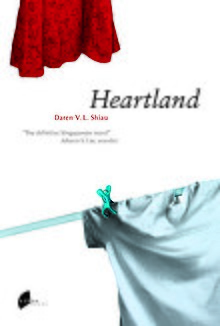Heartland (Shiau novel)
 |
|
| Author | Daren Shiau |
|---|---|
| Country | Singapore |
| Language | English |
| Genre | Novel |
| Publisher | Raffles Editions (SNP), Ethos Books |
|
Publication date
|
1999, 2002 |
| Media type | Print (Paperback) |
| Pages | 228 |
Heartland is a novel by Daren Shiau, and is the first and best known of his five books.
An existential work, Heartland deals with the paradox of rootedness and rootlessness of Singaporeans born after the Japanese Occupation.
The book received the Singapore Literature Prize Commendation Award in 1998, together with Alfian Sa'at's Corridor. Heartland was named by Singapore's English daily The Straits Times in December 1999, along with J.M. Coetzee's Disgrace, as one of the 10 Best Books of the Year. In 2007, an academic edition of Heartland was adopted into a textbook for Singapore secondary schools offering English literature in their GCE O-Level curriculum.
In 2015, Heartland was selected by The Business Times as one of the Top 10 English Singapore books from 1965 to 2015, alongside titles by Arthur Yap, Goh Poh Seng, Philip Jeyaretnam and Amanda Lee Koe. In the same year, MediaCorp commissioned the adaptation of Heartland into a telemovie directed by K Rajagopal.Heartland, the telemovie, was broadcast in August 2015.
Heartland has been hailed as “the definitive Singapore novel”, by author Johann S Lee and by travel guide "Lonely Planet: Singapore, Malaysia and Brunei.”
Playwright Alfian Sa’at, in his review of Shiau’s second book, following Heartland, noted: “One really has to admire Daren Shiau as a writer. Peninsular has its precedent in Shiau’s novel, Heartland, which gives its intentions a solid credibility.”
Commenting on Heartland in his essay on Shiau’s work, Emeritus Professor Edwin Thumboo wrote: “A personal vision. A personal response. That is what Shiau has developed to a remarkable extent. In his interview with Philip Cheah, Shiau said apropos of Heartland, his first book, that he wanted to write about ‘an individual trying to find his sense of place in space (geography) and time (history), and that the Sang Nila Utama myth/history is important in the novel’s structure because ‘its ambiguity (even to the extent of whether he really encountered a lion) questions our reliance on history as fact and reinforces the theme of lost (and false) paternity”.
...
Wikipedia
